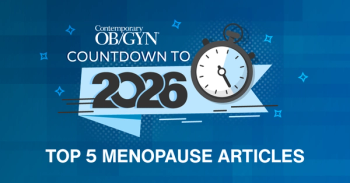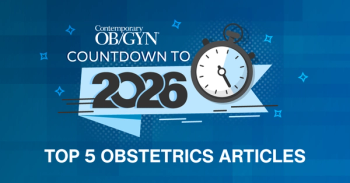
Thromboprophylaxis for cesarean delivery
Understand the perioperative considerations regarding thromboprophylaxis during cesarean delivery.
Q. A 35-year-old G2P1 presents at 39 weeks for scheduled repeat cesarean delivery. What are the perioperative considerations regarding thromboprophylaxis for cesarean delivery?
Thromboprophylaxis can entail several approaches, including early ambulation, lower extremity venous compression, and/or prophylactic anticoagulation. Early ambulation (ie, within 12 to 24 hours after surgery) can decrease the risk of thromboembolic complications. Compression stockings and pneumatic compression devices placed on the patient before the initiation of surgery and continued postoperatively, either until the patient is fully ambulatory or until hospital discharge, have been shown to decrease thromboembolic disease after a wide variety of surgical procedures,7,8 although only limited data evaluate their impact or that of perioperative heparin prophylaxis on thromboembolic disease after cesarean delivery.
It is not the purpose of this document to discuss thromboprophylaxis during pregnancy. A thorough, recent review on this topic is available.9
Are there randomized clinical trials or large cohort studies that can help guide clinical management?
There are no clinical trials of either compression stockings or pneumatic compression devices being used for prevention of thromboembolic complications following cesarean delivery. However, a recent decision analysis suggests that intermittent pneumatic compression devices are a cost-effective strategy for cesarean delivery.9,10
Three small, placebo-controlled, randomized clinical trials have evaluated the efficacy of unfractionated heparin11 or low-molecular-weight heparin (LMWH)12,13 thromboprophylaxis at the time of cesarean delivery. These 3 trials enrolled a total of only 267 women, and therefore provide insufficient evidence to make any recommendations for clinical practice.
A recent retrospective cohort of 1.5 million deliveries in the United States demonstrated an increased risk of postcesarean thromboembolic mortality and suggested that the risk of maternal death from thromboembolic disease might be reduced to that associated with vaginal delivery if universal lower extremity compression were initiated prior to delivery until the patient is ambulatory postoperatively.14
Newsletter
Get the latest clinical updates, case studies, and expert commentary in obstetric and gynecologic care. Sign up now to stay informed.











